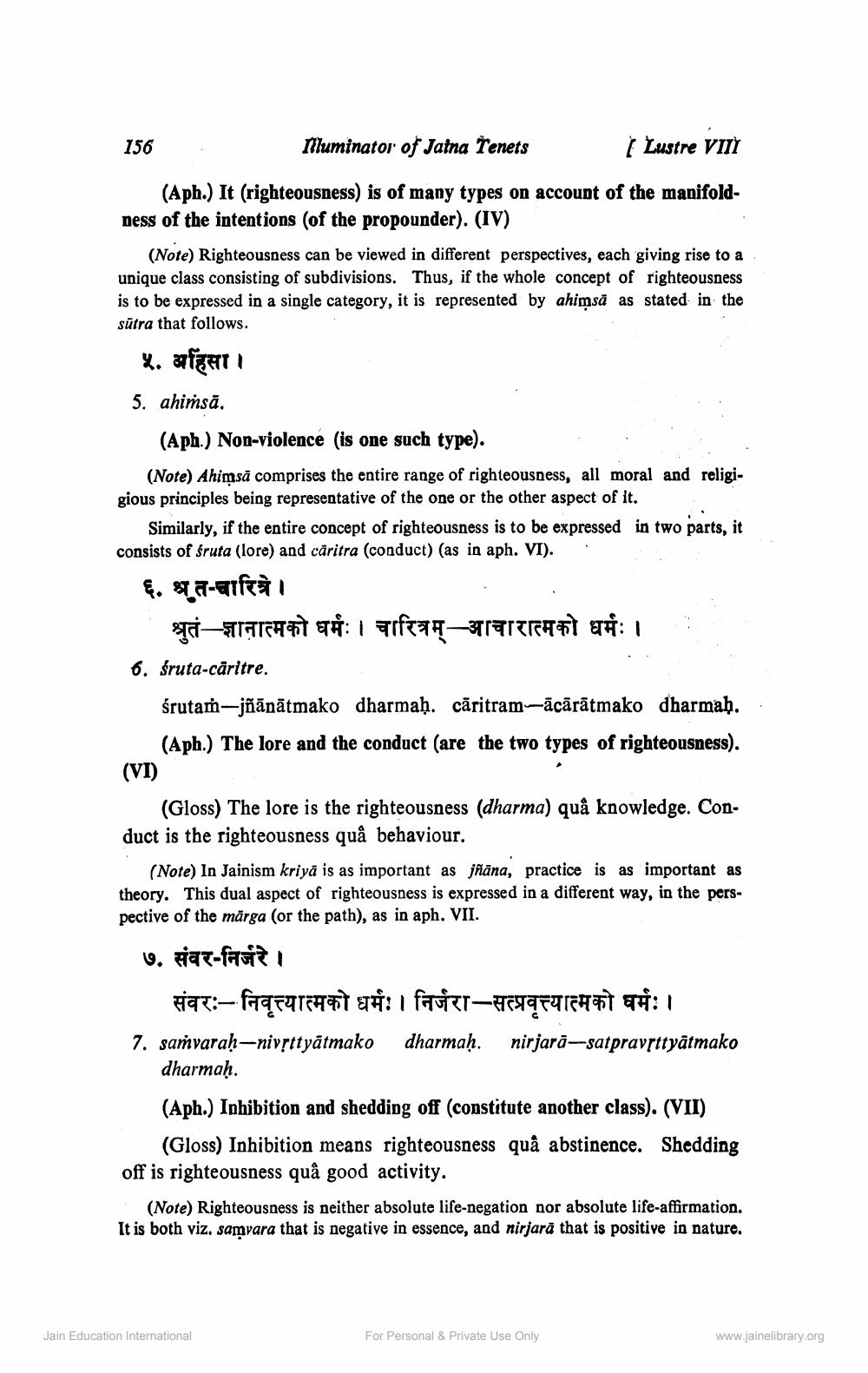________________
Illuminator of Jatna Tenets
Lustre VIII
(Aph.) It (righteousness) is of many types on account of the manifoldness of the intentions (of the propounder). (IV)
156
(Note) Righteousness can be viewed in different perspectives, each giving rise to a unique class consisting of subdivisions. Thus, if the whole concept of righteousness is to be expressed in a single category, it is represented by ahimsa as stated in the sutra that follows.
५. अहिंसा ।
5. ahimsă.
(Aph.) Non-violence (is one such type).
(Note) Ahimsă comprises the entire range of righteousness, all moral and religigious principles being representative of the one or the other aspect of it.
Similarly, if the entire concept of righteousness is to be expressed in two parts, it consists of śruta (lore) and caritra (conduct) (as in aph. VI).
६. श्रुत चारित्रे ।
श्रुतं - ज्ञानात्मको धर्मः । चारित्रम् - आचारात्मको धर्मः ।
6. śruta-cäritre.
śrutam-jñānātmako dharmaḥ. caritram-acārātmako dharmaḥ. (Aph.) The lore and the conduct (are the two types of righteousness).
(VI)
(Gloss) The lore is the righteousness (dharma) quâ knowledge. Conduct is the righteousness quâ behaviour.
(Note) In Jainism kriya is as important as jñāna, practice is as important as theory. This dual aspect of righteousness is expressed in a different way, in the perspective of the märga (or the path), as in aph. VII.
७. संवर - निर्जरे ।
संवरः - निवृत्त्यात्मको धर्मः । निर्जरा - सत्प्रवृत्त्यात्मको धर्मः । dharmaḥ.
7. samvaraḥ-nivṛttyātmako
nirjarā-satpravṛttyātmako
dharmaḥ.
(Aph.) Inhibition and shedding off (constitute another class). (VII)
(Gloss) Inhibition means righteousness quâ abstinence. Shedding off is righteousness quâ good activity.
(Note) Righteousness is neither absolute life-negation nor absolute life-affirmation. It is both viz. samvara that is negative in essence, and nirjarā that is positive in nature.
Jain Education International
For Personal & Private Use Only
www.jainelibrary.org




